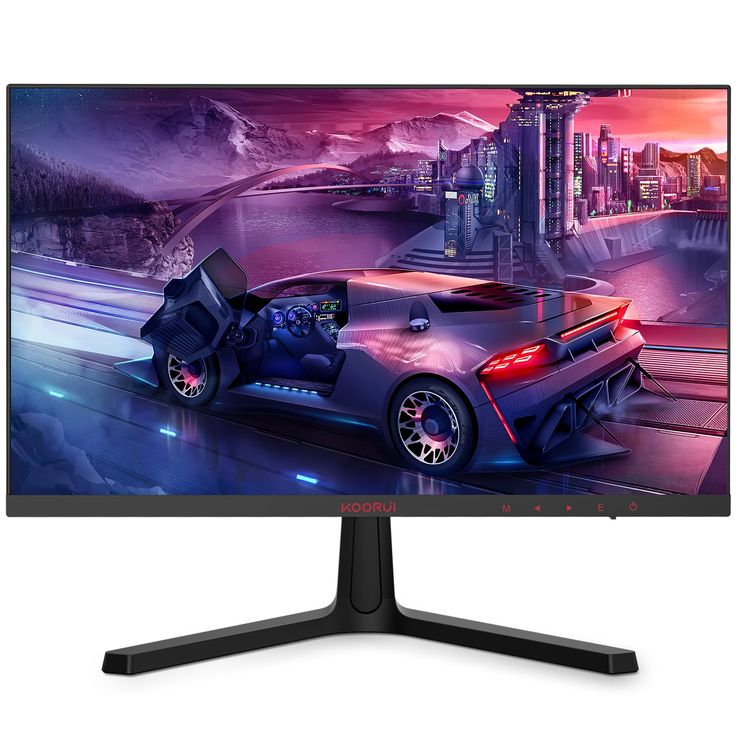When it comes to gaming, having the right monitor can make all the difference between a good experience and a great one. With a wide array of options available, it’s essential to understand what features truly enhance gameplay gaming monitor. In this comprehensive guide, we’ll explore the key features to consider when selecting a gaming monitor, helping you make an informed decision.

1. Resolution
4K vs. 1440p vs. 1080p
- 4K (Ultra HD): Offers stunning visuals with a resolution of 3840 x 2160. Perfect for immersive experiences but requires a powerful GPU.
- 1440p (QHD): A great balance of performance and quality, with a resolution of 2560 x 1440. Ideal for most gamers who want high detail without the demands of 4K.
- 1080p (Full HD): Still widely used, especially for competitive gaming. With a resolution of 1920 x 1080, it allows for high frame rates and is easier on your hardware.
2. Refresh Rate
The refresh rate, measured in hertz (Hz), indicates how many times per second the monitor refreshes the image. A higher refresh rate leads to smoother gameplay.
- 60Hz: Standard for most monitors, suitable for casual gaming.
- 144Hz: The sweet spot for many gamers, offering smoother motion and reduced blur.
- 240Hz and above: Preferred by competitive gamers for the ultimate responsiveness, making a noticeable difference in fast-paced games.
3. Response Time
Response time refers to how quickly a pixel can change from one color to another, impacting motion blur and ghosting.
- 1ms to 5ms: Ideal response times for gaming monitors. Look for displays with lower response times for clearer motion during fast action.
4. Panel Type
The type of panel affects color reproduction, viewing angles, and response times.
- IPS (In-Plane Switching): Offers the best color accuracy and viewing angles but may have slower response times compared to TN panels.
- TN (Twisted Nematic): Known for fast response times and high refresh rates, making it ideal for competitive gaming but sacrifices color accuracy and viewing angles.
- VA (Vertical Alignment): Balances color and response time, offering better contrast ratios but generally slower response times than TN.
5. Adaptive Sync Technology
This technology helps eliminate screen tearing and stuttering by synchronizing the monitor’s refresh rate with the graphics card’s output.
- NVIDIA G-SYNC: Works with NVIDIA graphics cards to provide smooth gaming experiences.
- AMD FreeSync: A cost-effective alternative for AMD graphics card users. Many monitors now support both technologies.
6. Size and Aspect Ratio
Monitor size can greatly impact your gaming experience.
- Size: Typically, 24 to 32 inches are popular sizes for gaming. Consider your desk space and viewing distance.
- Aspect Ratio: Most monitors are 16:9, but ultrawide (21:9 or 32:9) monitors provide a more immersive experience, especially in racing and simulation games.
7. Connectivity Options
Ensure the monitor has the necessary ports to connect with your devices.
- HDMI and DisplayPort: Common ports for gaming. DisplayPort usually supports higher refresh rates and resolutions.
- USB-C: Increasingly popular for newer devices, offering flexibility and fast data transfer.
8. Color Accuracy and HDR
For an immersive visual experience, look for monitors with good color accuracy and HDR (High Dynamic Range) support.
- Color Accuracy: Check for monitors that cover a wide color gamut (like sRGB, Adobe RGB).
- HDR: Enhances contrast and color, providing a more dynamic range between light and dark.
9. Build Quality and Ergonomics
A sturdy build and ergonomic features are essential for comfort during long gaming sessions.
- Adjustable Stands: Look for height, tilt, and swivel adjustments to find the perfect viewing angle.
- VESA Mount Compatibility: Allows you to mount the monitor on a wall or adjustable arm for optimal positioning.
Conclusion
Investing in a quality gaming monitor can enhance your overall gaming experience. By considering resolution, refresh rate, response time, panel type, adaptive sync technology, size, connectivity, color accuracy, and build quality, you can find the perfect monitor to match your gaming needs. Whether you’re a casual gamer or a competitive pro, the right monitor can elevate your gameplay to new heights. Happy gaming!
